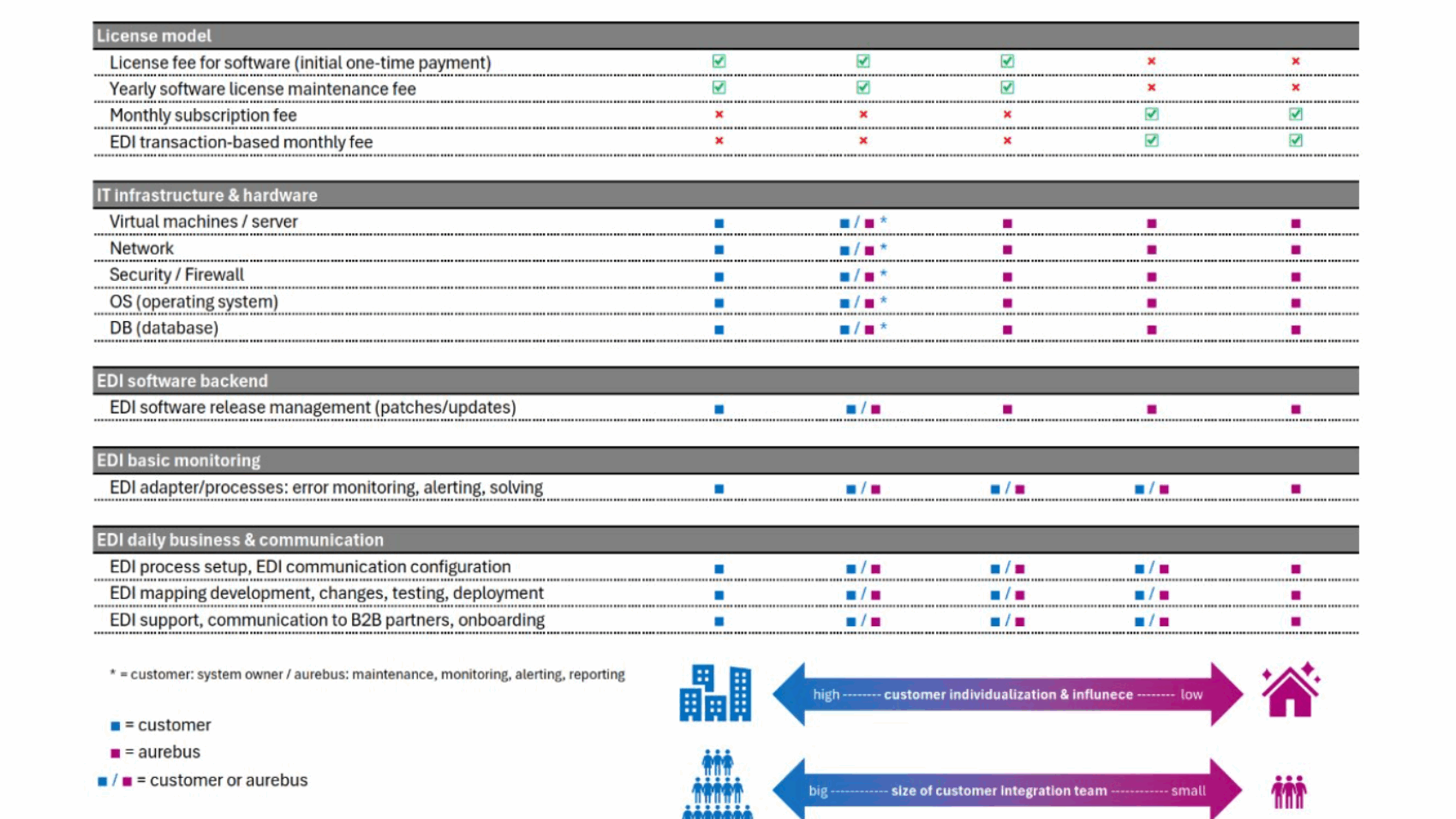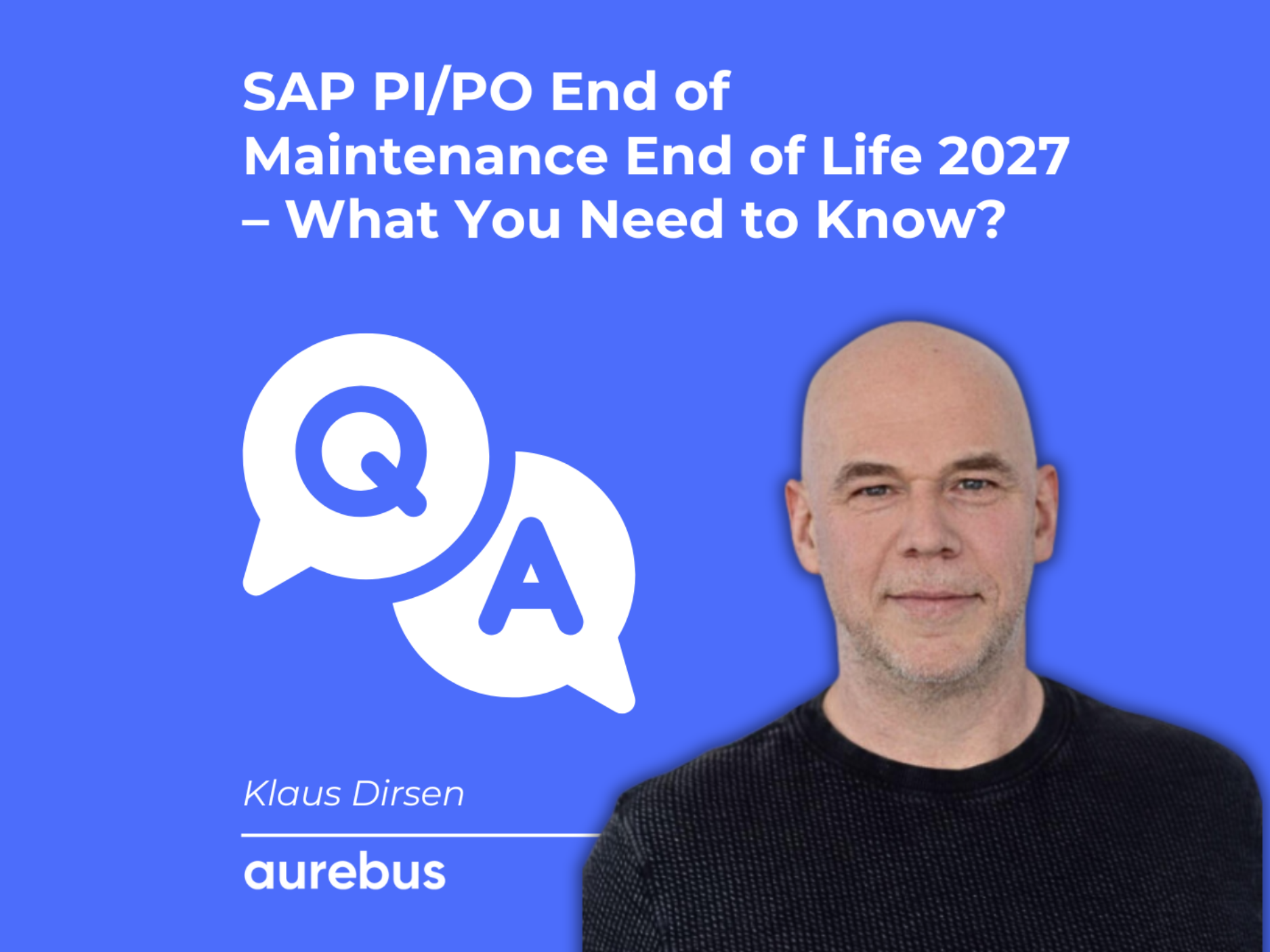On-Premises, Hybrid or Cloud: Which EDI operating model is best for you?
This overview will help you decide which operating model is best suited for your needs: On-Premises, On-Premises Remote Managed Service, iPaaS (Integration Platform-as-a-Service) / SaaS, or Full Managed.
4 Typical Scenarios:
On-Premises
- Who it’s for: Companies that desire full control over their IT infrastructure and data.
- License Model: One-time license fee and annual maintenance fee.
- IT Infrastructure: Virtual machines, network, security, and operating systems are managed internally.
- Advantages: Highest level of control and customization options.
- Disadvantages: Requires deep specialized knowledge for EDI infrastructure, especially for patches and updates.
On-Premises Remote Managed Service
- Who it’s for: Companies that want to retain their infrastructure but need external support for management and maintenance.
- License Model: Same as On-Premises, with external service for infrastructure management.
- IT Infrastructure: Operated internally but managed externally for monitoring and updates.
- Advantages: Combines high control with external expertise.
- Disadvantages: No complete transfer of responsibility for the EDI infrastructure / internal IT infrastructure team still required.
iPaaS (Integration Platform-as-a-Service) / SaaS
- Who it’s for: Companies looking for a flexible, scalable solution without needing their own IT infrastructure.
- License Model: Monthly subscription and EDI transaction fees.
- IT Infrastructure: Entirely cloud-based, no need for own servers.
- Advantages: Focus on managing individual EDI processes, flexible distribution of responsibilities possible.
- Disadvantages: Higher organizational effort, approval of developments necessary.
Full Managed
- Who it’s for: Companies without their own EDI expertise that prefer a fully managed solution. Our consulting team takes care of all EDI matters.
- License Model: Monthly subscription fee including all services.
- IT Infrastructure: Fully managed by external providers.
- Advantages: Full focus on internal business processes, maximum relief for internal IT resources, and comprehensive external service.
- Disadvantages: Fewer customization options, no possibility for self-programming.


Which solution is right for you?
On-Premises is ideal for large companies with extensive IT resources and specific requirements for security and customization. This solution offers maximum control but also requires significant responsibility and initial investments in licenses, hardware, and personnel.
On-Premises Remote Managed Service is suitable for companies that want to retain their existing infrastructure but need specialized external support for patches, updates, maintenance, and monitoring of OS and DB. This hybrid solution offers a good balance between control and external expertise.
iPaaS / SaaS is perfect for large companies looking for a flexible and scalable solution with a full focus on EDI processes. These models require high discipline, good organization, and enable flexible implementation and adaptation to changing business needs.
Full Managed is the best choice for companies without their own EDI expertise or those looking to relieve their internal resources. This solution provides comprehensive service and support, but it comes with less flexibility in process design.

Contact us for a free consultation and find out which solution best meets your needs

